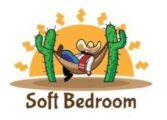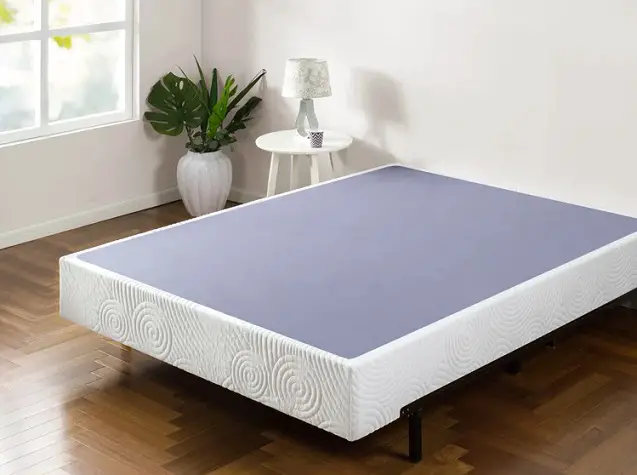Bunkie boards are made of different materials such as plywood, particleboard, solid wood, metal sheet, or plastic. Each of these Bunkie boards will cost you money when you buy them. You can save money by using alternatives to bunkie boards and one way is by making a Bunkie board at home. The material used will determine also how long the Bunkie board lasts.
You can decide to make your own plywood Bunkie board at home using locally available plywood. It is not a complicated process and following these simple steps, you will have a perfect Bunkie board for your bed.
Table of Contents
Step 1: Get The Measurements
Here you will need to measure the length and the width of the bade frame where you will put the Bunkie board. If the mattress is to be laid on the floor, you need to get the measurements of the mattress that you will put on top of the Bunkie board.
Measure the inside part of the bed frame where the mattress slides in. For the measurements you get, you will need to subtract at least 2 inches. That means the plywood will be shorter by 2 inches and narrower by 2 inches.
This will allow for easy insertion and retrieval of the plywood Bunkie board from the bed frame. If you cut the exact size, you may experience problems putting the Bunkie board on or removing it.
Step 2: Cut The Plywood To Size
After getting the measurement, it is time to cut the plywood. You will need to cut the plywood in a straight line. You can draw a line between two points and using a straight material, make a straight line that you can see.
Do this on all sides and use a wood saw that is hand-held, a circular saw will also do the cutting. To avoid damaging the plywood, use a saw that has smaller teeth that are closely spaced. A saw that has teeth widely spaced may cause damage to the structure of the plywood sheet.
Step 3: Sand Down The Edges
The edges produced by the cutting will be rough. They can even injure you and you need to be careful. You need to use sandpaper and make the rough edges smooth. The rough edges can tear the mattress or the mattress’s clothing. It will even damage the clothing that you will be putting on the plywood Bunkie board.
Step 4: Cut The Quilted Upholstery Clothing
After you have cut and sanded the plywood to a smooth finish, you will need to cover it in fabric. This will make the plywood Bunkie board stronger, and presentable and will reduce the friction between the Bunkie board, the bed frame, and the mattress.
Reduced friction will mean the Bunkie board is unlikely to make squeaky sounds as you sleep on it. The fabric is cut in such a way that the measurement will exceed the plywood size that you have cut by 2 inches all around.
The extra material will ensure the corners of the plywood are covered by turning the fabric over.
Step 5: Glue The Quilted Material To The Plywood
After you have cut the quilted fabric into the right size, you need to clean the plywood off the dust and any other dirt. This will ensure the glue sticks well to the plywood. Ensure the fabric is also clean and devoid of dust and dirt.
Glue such as Fabric Fusion and Craft Bond are readily available and affordable and you can use them. They will give a strong bond. Apply the glue on the plywood evenly and then get the first piece of quilted material and lay it on top.
Be sure to start from one end and roll it out to the other end. As you roll it out, use your hand to make the fabric straight removing any air that might be trapped inside. Apply gentle pressure along the line of the roll to ensure the fabric sticks well to the plywood.
Turn the board to the other side and repeat the process. First, ensure the fabric edges from the previous side are rolled on the edges before applying glue on the side and rolling the fabric. Repeat the process and ensure the edges are also rolled over the fabric on the other side. Apply enough glue to the fabric to fabric bond.
With the steps above, you have made the perfect Bunkie board at fraction of the cost of buying a new Bunkie board.
Why Should You Use Plywood To Make Bunkie Boards?
The choice of plywood to make the Bunkie board is informed by the fact that it is made of several sheets of wood that are arranged at an angle to ensure the grains of the sheet is altered. Different sheds are hot glued together to make a strong but lightweight material.
The wood making the plywood may vary between hardwood and softwood. They also come with different qualities when it comes to durability, flexibility, brightness, and other physical characteristics.
When you cover your DIY plywood Bunkie board with quilted material, you will make the resultant Bunkie board more pleasing to the eye than just having simple cut plywood. The quilted material also ensures you reduce the damage that may be caused by the plywood to your mattress.
When you added clothing to the plywood, you will be making the Bunkie board that is more sturdy and can support a higher weight.
What Else To Consider Before Making A Plywood Bunkie Board
Once you have the materials and you have decided you will make your own Bunkie board, you will need to consider other factors such as:
1. Do you need a folding Bunkie board
This is especially important when you will be required to move the bed and the Bunkie board regularly. If this is the case, then you need to make something that is not bulky and can be moved easily.
2. What is the ideal thickness of the Bunkie board
The thickness will vary depending on your taste and preferences You may consider putting together two plywood sheets to make one thick and stronger bunkie board. Make sure you have the right glue to stick them together and the pins that will not be left protruding
3. Availability of materials
Consider where you will be getting the materials needed to make the Bunkie board at home. If the materials are coming in from far places, the cost of acquiring the materials might be higher than the cost of buying a ready-made Bunkie board.
4. The cost
Consider the cost of buying the materials, the cost of transporting the materials, and the overall cost of making the Bunkie board at home. Compare that cost with the cost of acquiring a new ready-made plywood Bunkie bed.
If the cost of making a Bunkie board is higher consider buying the board ready-made.
Final thoughts
When the materials to make the Bunkie board are freely available or can be acquired at minimal cost, then it makes sense to make your own ply wood Bunkie board rather than buy a new one. It is fun to make your own plywood Bunkie bed at home by following the simple steps outlined above. Remember to use the home made plywood bunkie board together with slats for extra support.

